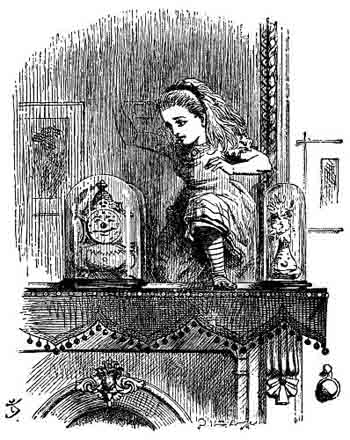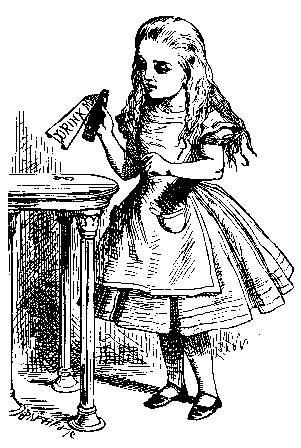 The cabinet over the kitchen sink holds a multitude of little green bottles; almost all of them have Ron's name on them. Over the years, we have accumulated quite a collection! I am not a scientist, but I can reel off the names of the drugs that have been prescribed to him: Cymbalta, Wellbutrin, Lexapro for depression, Respridal, Klonopin, and Depakote for Bipolar disorder, Coreg for congestive heart failure. Years ago we had a round with Abilify, star of many commercials featuring a dark cloud, but Ron had a--well, let's just call it negative--reaction to it. Shudder. Now I look them all up, preparing myself for possible side effects and a trip to the other side of the looking glass.
The cabinet over the kitchen sink holds a multitude of little green bottles; almost all of them have Ron's name on them. Over the years, we have accumulated quite a collection! I am not a scientist, but I can reel off the names of the drugs that have been prescribed to him: Cymbalta, Wellbutrin, Lexapro for depression, Respridal, Klonopin, and Depakote for Bipolar disorder, Coreg for congestive heart failure. Years ago we had a round with Abilify, star of many commercials featuring a dark cloud, but Ron had a--well, let's just call it negative--reaction to it. Shudder. Now I look them all up, preparing myself for possible side effects and a trip to the other side of the looking glass.So, let's see what Tizanidine, the most recent of the meds to join our extensive collection, will have to offer our family. Do I need to hide the sharp objects? A small, round white pill, it looks innocuous enough. Dr. Aradillas prescribed it for Ron on Monday. Most commonly, Tizanidine is used for relief from muscle spasms. During the exam, Dr. Aradillas found that Ron's extremities--hands and feet--often spasm in sympathy with the damaged abdominal nerves. This is why Ron often feels the need to sit on the side of the bed at night, stretching out his arms and rocking back and forth. It explains it, but it does not help me cope with the swaying of the bed or the slightly queasy feeling in my stomach.
 In other news, however, the Tizanidine does just what we hope the Ketamine will do: it blocks the brain from receiving the signals from the nerves. Ron's first dose put him in such a relaxed state that he fell asleep at Allen's birthday dinner. No one would have minded, except that we were in a restaurant at the time. Luckily, both Allen and Jared are strapping young men so we managed to maneuver Ron home. Lesson learned: only take Tizanidine while home. Ron had a pretty good night's sleep with no rocking motions, although his snoring would wake the dead but that's a whole other problem and not one we think Tizanidine can help.
In other news, however, the Tizanidine does just what we hope the Ketamine will do: it blocks the brain from receiving the signals from the nerves. Ron's first dose put him in such a relaxed state that he fell asleep at Allen's birthday dinner. No one would have minded, except that we were in a restaurant at the time. Luckily, both Allen and Jared are strapping young men so we managed to maneuver Ron home. Lesson learned: only take Tizanidine while home. Ron had a pretty good night's sleep with no rocking motions, although his snoring would wake the dead but that's a whole other problem and not one we think Tizanidine can help.Here's the trick, though, to dealing with traumatic brain injury; a damaged brain does not always react to drugs in the same way that a "normal" brain would. More than once, a drug that was supposed to cause only mild reactions made my dear husband into a raving lunatic. And on several occasions, a drug so depressed his systems that he hung in a near coma state. I slept with the phone next to me during the night, alert to signs that the Tizanidine might not be all it was cracked up to be and ready to dial 911. Snoring aside, I wasn't sleeping much.
Ron was still breathing normally--for him--this morning so I went off to work. Allen was home all day but my phone didn't ring once. And when I walked in the door at 5:30, Ron was sitting happily on the couch and watching ESPN. It is possible that his color looked better. It is also possible I was too tired to tell.
But this much is clear: the Tizanidine seems to be doing exactly what it is supposed to do. It is a small but important miracle.
Maybe I'll actually sleep tonight.


